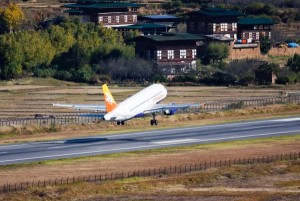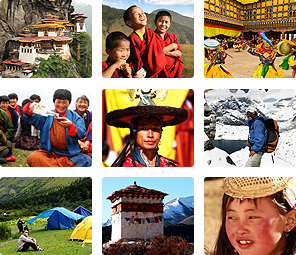Bhutan is one of the countries with seasonal variations depending on the elevation. It has four seasons each of which has its beauty and the transition from one season to another gives a wonderful moment. Bhutan witnesses travelers from across the world at different seasons of the year for diverse purposes.
The best time to visit Bhutan is during the spring (March to May) when the valleys come alive with flowers in bloom, the wildflowers including rhododendrons are out, plants start budding and the birds are in song, making it the best season for hiking. It is a season of fresh green, the color of a young newborn leaf.
Spring is perhaps the best season to explore Bhutan on foot and indulge in some trekking activities. It can be a dreamland for photographers during the spring months with the clear look of occasional mountain views and be amazed by the lush green paddy fields and landscapes.
Summer begins from June to August. It is an abundant time of the year with flowers in full bloom and valleys covered in green, and pine cones glisten in the sun ready to plummet to the ground.
It is referred to as a low season due to the rains, which makes trekking less an option for the visitors. The climate can get adverse due to heavy rainfall and snowfall, disrupting roads and everyday transportation. Frequent roadblocks during the monsoon season and snowfall during winter in the eastern and central regions of Bhutan usually make the routes unfavorable for the commuters.
September to November is the time when the entire landscape turns into golden color with less rainfall and clear skies. With mildly sunny and chilly, it makes the second best season after spring to visit Bhutan. The farmers harvesting their crops in the paddy fields are yet another reason to visit in the autumn season.
This is a season of festivities including the famous Black-necked crane festival in beautiful Phobjikha valley and Thimphu Tshechu marked by indigenous faiths, customs, and traditions. And several of Bhutan’s major festivals are celebrated.
The winter season begins in December and lasts till February. The days bring full of sunshine while evenings can be chilly. It remains comparatively dry in most regions. It gives a clear view of the world’s highest Himalayan mountain ranges covered in snow. January end and early February see mild snowfall in the mountains and cities of Thimphu and Paro. The National Day of Bhutan is also celebrated on 17 December.
However, regardless of the seasons, Bhutan exhibits the culture and traditions of its communities through festivals.
Bhutan is home to many ancient monasteries and visiting the country gives you every chance to learn more about Buddhism. For those who intend to discover the sacred Vajrayana Teachings and monasteries, you are always at the right time to visit Bhutan regardless of your arrival.
Festivals in Bhutan
Bhutan is known for its many colorful festivals; every city has a colorful festival at least once a year.
Punakha Tsechu: 5-7 March
Paro Festival: 4-8 April
Ura Festival Bumthang: 4-8 May
Thimphu Drupchen: 22 September
Wangdi Festival: 24 – 26 September
Thimphu Festival: 26-28 September
Tamshingphala Choepa Bumthang: 26-28 September
Gangtey Festival: 28 September – 1 October
Tangbi Mani Bumthang: 29 September – 2 October
The dates are subject to change annually but the dates usually fall within the same season or possibly the same month.







